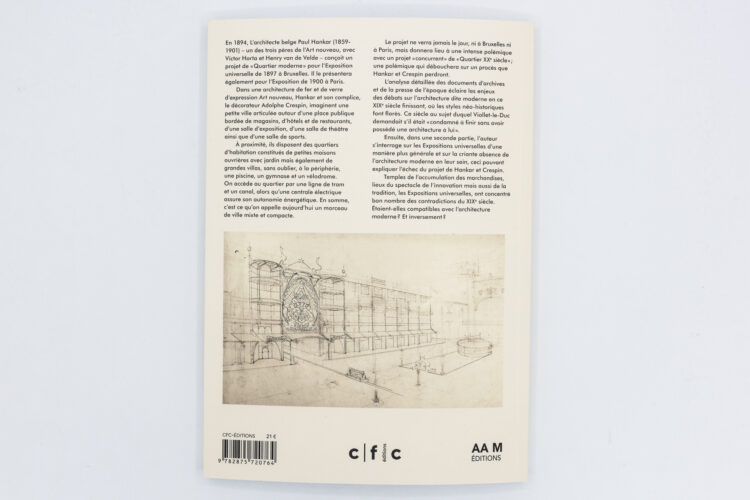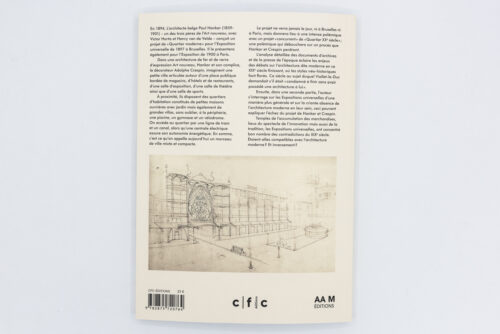






Yaron PesztatExpositions universelles
In 1894, the Belgian architect Paul Hankar – one of the three fathers of Art Nouveau, along with Victor Horta and Henry van de Velde – designed a project for a ‘Modern Quarter’ for the 1897 World Exhibition in Brussels. He also presented it for the 1900 Exhibition in Paris. In an Art Nouveau architecture of iron and glass, Hankar and his partner, the decorator Adolphe Crespin, designed a small town around a public square with shops, hotels and restaurants, an exhibition hall, a theatre and a sports hall. Next to it are residential areas with small worker’s houses with gardens and large villas, as well as a swimming pool, a gymnasium and a velodrome on the outskirts. A tram line and a canal provide access to the district, while a power station ensures its energy autonomy. In short, it is what is known today as a mixed and compact city. The project never saw the light of day, either in Brussels or in Paris, but it did give rise to an intense controversy with a ‘rival’ project, the ‘Quartier XXe siècle’, a controversy which led to a court case that Hankar and Crespin lost. The detailed analysis of archive documents and the press of the time sheds light on the issues at stake in the debates on so-called modern architecture in the late 19th century, when neo-historical styles were flourishing. This century, about which Viollet-le-Duc asked whether it was “condemned to end without having possessed an architecture of its own”.
Then, in the second part, the author questions the Universal Exhibitions in a more general way and the glaring absence of modern architecture within them, which could explain the failure of the Hankar and Crespin project. Temples of the accumulation of goods, places of the spectacle of innovation but also of tradition, the Universal Exhibitions concentrated many of the contradictions of the 19th century. Were they compatible with modern architecture? And vice versa?






- Yaron Pesztat
- Cfc Eds
- Language French
- Release2022
- Pages160
- Format24 x 17 cm
- ISBN9782875720764







